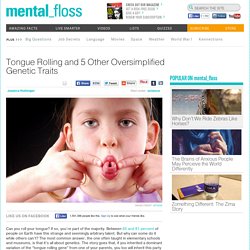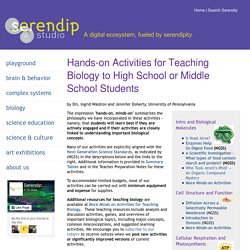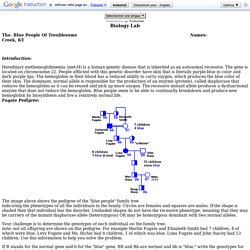

Genome: Unlocking Life's Code. 7 Genes That Control Your Cat’s Fur Color. Cat fur color is a common teaching tool in biology and genetics classes.

Figuring out which genes create the family feline’s coat color is a fun way to help students learn the basics of genetic inheritance. I want to share that fun with you, so here are the seven genes that control virtually all the common cat coat color characteristics. 1. B: Black vs. non-black The B gene controls the production of eumelanin, the pigment that makes a cat’s fur black. 2.
This gene controls the coat’s "ticking," or banding of colors on a cat’s fur. 3. If a cat inherited the A allele, the T gene determines what kind of tabby pattern will be produced. Myths of Human Genetics: Introduction. A fun way to teach the basics of genetics is to have students look at traits on themselves.

Just about every biology student has, in one class or another, been asked to roll their tongue, look at their earlobes, or check their fingers for hair. Students can easily collect data on several different traits and learn about genes, dominant and recessive alleles, maybe even Hardy-Weinberg proportions. Best of all, these data don't require microscopes, petri dishes, or stinky fly food. Unfortunately, what textbooks, lab manuals and web pages say about these human traits is mostly wrong. Most of the common, visible human traits that are used in classrooms do NOT have a simple one-locus, two-allele, dominant vs. recessive method of inheritance. In some cases, the trait doesn't even fall into the two distinct categories described by the myth.
In other cases, the trait really does fall into two categories, but it isn't determined by genetics. Who's my daddy? Alternatives Summary for worried parents. Tongue Rolling and 5 Other Oversimplified Genetic Traits. Can you roll your tongue?

If so, you’re part of the majority. Between 65 and 81 percent of people on Earth have this strange and seemingly arbitrary talent. But why can some do it while others can’t? The most common answer, the one often taught in elementary schools and museums, is that it’s all about genetics. The story goes that, if you inherited a dominant variation of the “tongue rolling gene” from one of your parents, you too will inherit this party trick. Science Starters. BHSBiologyClass - Genetics. Hands-on Activities for Teaching Biology to High School or Middle School Students.
By Drs.

Ingrid Waldron and Jennifer Doherty, University of Pennsylvania The expression "hands-on, minds-on" summarizes the philosophy we have incorporated in these activities - namely, that students will learn best if they are actively engaged and if their activities are closely linked to understanding important biological concepts. Many of our activities are explicitly aligned with the Next Generation Science Standards, as indicated by (NGSS) in the descriptions below and the links to the right. Additional information is provided in Summary Tables and in the Teacher Preparation Notes for these activities. To accommodate limited budgets, most of our activities can be carried out with minimum equipment and expense for supplies. Additional resources for teaching biology are available at More Minds on Activities for Teaching Biology.
Read More Intro and Biological Molecules Is Yeast Alive? Enzymes Help Us Digest Food(revised, July, 2016) Who Took Jerell's iPod? More Minds-on Activities. Understanding Pedigrees.mov. Fires. Sex-linked genes, early human genetics. DNA from the Beginning. Drag-and-Drop Pedigree 1: Tongue Rolling. Pedigree.ppt. Karyotyping Activity. BluePeopleLab. Fourni par Traduction Biology Lab The.

Blue People Of Troublesome Names:Creek, KY Introduction: Hereditary methemoglobinemia (met-H) is a human genetic disease that is inherited as an autosomal recessive. The image above shows the pedigree of the "blue people" family tree indicating the phenotypes of all the individuals in the family. Your challenge is to determine the genotypes of each individual on the family tree. note: not all offspring are shown on this pedigree.
If B stands for the normal gene and b for the "blue" gene, BB and Bb are normal and bb is "blue," write the genotypes for the individuals in the pedigree. Vital.cs.ohiou.edu/steamwebsite/downloads/FurryFamily.swf. Genetics for Kids - Science Games and Videos. Genetics. Characteristics of Inheritance. Observable Human Characteristics. Bastiaens, M., ter Huurne, J., Gruis, N., Bergman, W., Westendorp, R., Vermeer, B.

Seventh Grade Science / Genetics Target 1 Genes and Traits. Punnett Squares. Tour of Basic Genetics. PBS Genetics and Heredity Resources. DNA . Genetics. DNA . Intro. Evolution. Evolution Lab. Lab Center - Mendelian Inheritance.